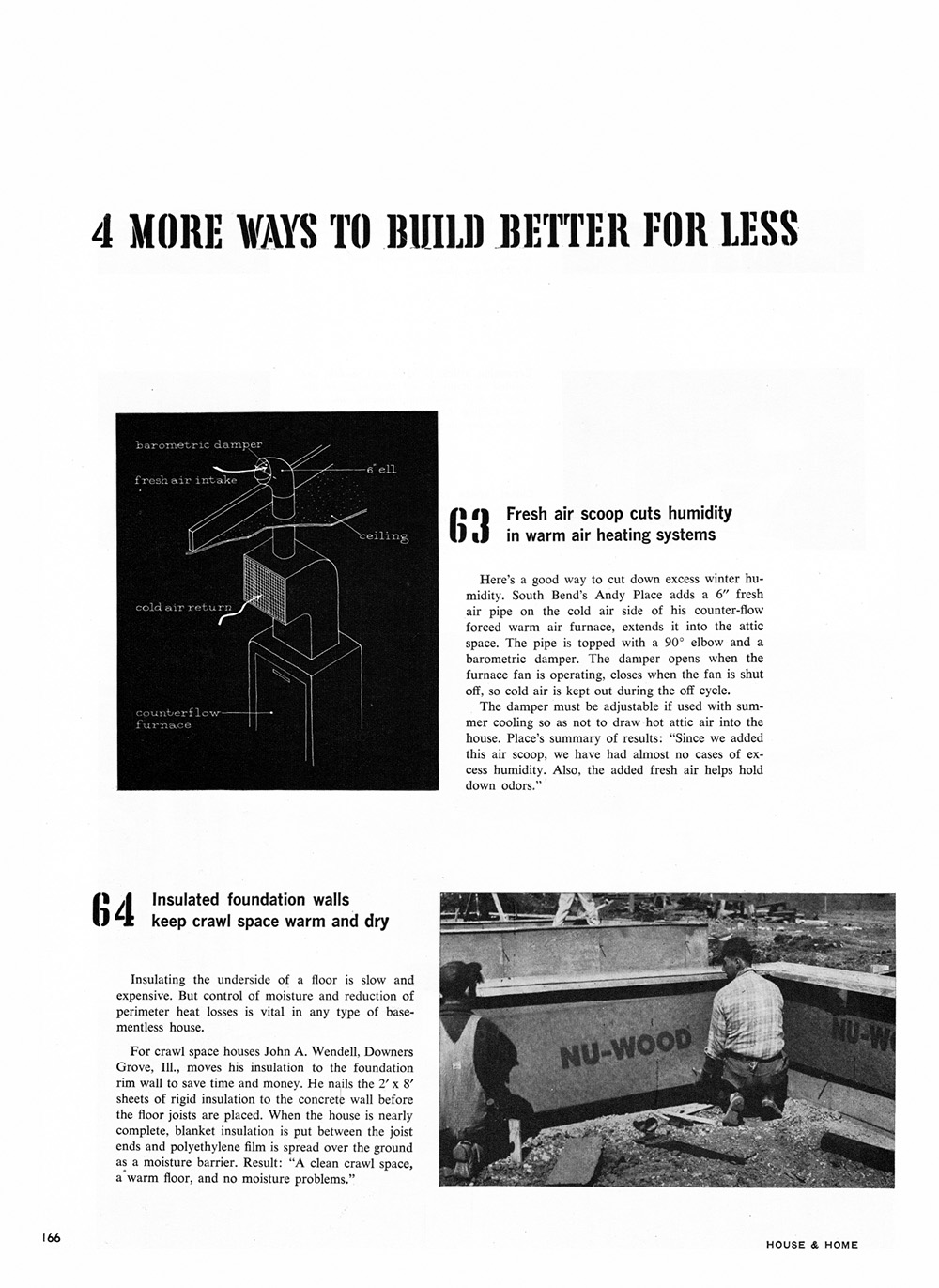


4 MORE WAYS TO BUILD BETTER FOR LESS
(1 f| Fresh air scoop cuts humidity
) If in warm air heating systems
Here's a good way to cut down excess winter humidity. South Bend's Andy Place adds a 6" fresh air pipe on the cold air side of his counter-flow forced warm air furnace, extends it into the attic space. The pipe is topped with a 90° elbow and a barometric damper. The damper opens when the furnace fan is operating, closes when the fan is shut off, so cold air is kept out during the off cycle.
The damper must be adjustable if used with summer cooling so as not to draw hot attic air into the house. Place's summary of results: "Since we added this air scoop, we have had almost no cases of excess humidity. Also, the added fresh air helps hold down odors."ť
Insulated foundation walls keep crawl space warm and dry
Insulating the underside of a floor is slow and expensive. But control of moisture and reduction of perimeter heat losses is vital in any type of basementless house.
For crawl space houses John A. Wendell, Downers Grove, 111., moves his insulation to the foundation rim wall to save time and money. He nails the 2' x 8' sheets of rigid insulation to the concrete wall before the floor joists are placed. When the house is nearly complete, blanket insulation is put between the joist ends and polyethylene film is spread over the ground as a moisture barrier. Result: "A clean crawl space, a warm floor, and no moisture problems."ť